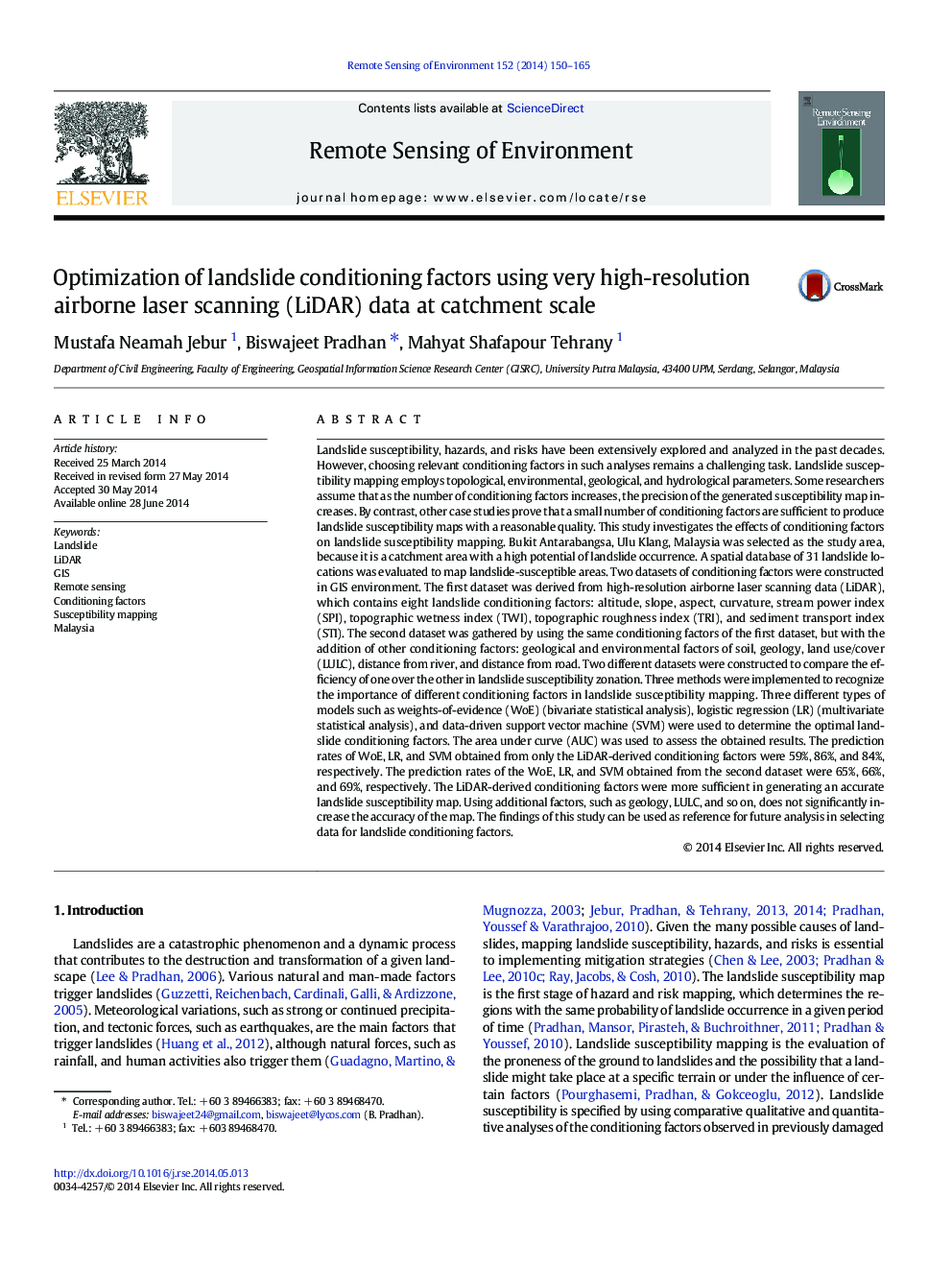| کد مقاله | کد نشریه | سال انتشار | مقاله انگلیسی | نسخه تمام متن |
|---|---|---|---|---|
| 6346321 | 1621248 | 2014 | 16 صفحه PDF | دانلود رایگان |
عنوان انگلیسی مقاله ISI
Optimization of landslide conditioning factors using very high-resolution airborne laser scanning (LiDAR) data at catchment scale
دانلود مقاله + سفارش ترجمه
دانلود مقاله ISI انگلیسی
رایگان برای ایرانیان
کلمات کلیدی
موضوعات مرتبط
مهندسی و علوم پایه
علوم زمین و سیارات
کامپیوتر در علوم زمین
پیش نمایش صفحه اول مقاله

چکیده انگلیسی
Landslide susceptibility, hazards, and risks have been extensively explored and analyzed in the past decades. However, choosing relevant conditioning factors in such analyses remains a challenging task. Landslide susceptibility mapping employs topological, environmental, geological, and hydrological parameters. Some researchers assume that as the number of conditioning factors increases, the precision of the generated susceptibility map increases. By contrast, other case studies prove that a small number of conditioning factors are sufficient to produce landslide susceptibility maps with a reasonable quality. This study investigates the effects of conditioning factors on landslide susceptibility mapping. Bukit Antarabangsa, Ulu Klang, Malaysia was selected as the study area, because it is a catchment area with a high potential of landslide occurrence. A spatial database of 31 landslide locations was evaluated to map landslide-susceptible areas. Two datasets of conditioning factors were constructed in GIS environment. The first dataset was derived from high-resolution airborne laser scanning data (LiDAR), which contains eight landslide conditioning factors: altitude, slope, aspect, curvature, stream power index (SPI), topographic wetness index (TWI), topographic roughness index (TRI), and sediment transport index (STI). The second dataset was gathered by using the same conditioning factors of the first dataset, but with the addition of other conditioning factors: geological and environmental factors of soil, geology, land use/cover (LULC), distance from river, and distance from road. Two different datasets were constructed to compare the efficiency of one over the other in landslide susceptibility zonation. Three methods were implemented to recognize the importance of different conditioning factors in landslide susceptibility mapping. Three different types of models such as weights-of-evidence (WoE) (bivariate statistical analysis), logistic regression (LR) (multivariate statistical analysis), and data-driven support vector machine (SVM) were used to determine the optimal landslide conditioning factors. The area under curve (AUC) was used to assess the obtained results. The prediction rates of WoE, LR, and SVM obtained from only the LiDAR-derived conditioning factors were 59%, 86%, and 84%, respectively. The prediction rates of the WoE, LR, and SVM obtained from the second dataset were 65%, 66%, and 69%, respectively. The LiDAR-derived conditioning factors were more sufficient in generating an accurate landslide susceptibility map. Using additional factors, such as geology, LULC, and so on, does not significantly increase the accuracy of the map. The findings of this study can be used as reference for future analysis in selecting data for landslide conditioning factors.
ناشر
Database: Elsevier - ScienceDirect (ساینس دایرکت)
Journal: Remote Sensing of Environment - Volume 152, September 2014, Pages 150-165
Journal: Remote Sensing of Environment - Volume 152, September 2014, Pages 150-165
نویسندگان
Mustafa Neamah Jebur, Biswajeet Pradhan, Mahyat Shafapour Tehrany,